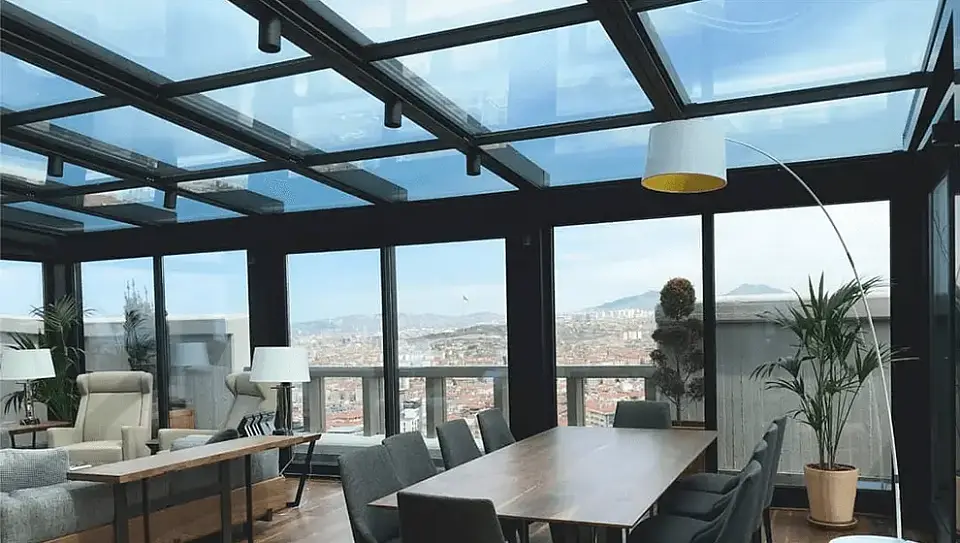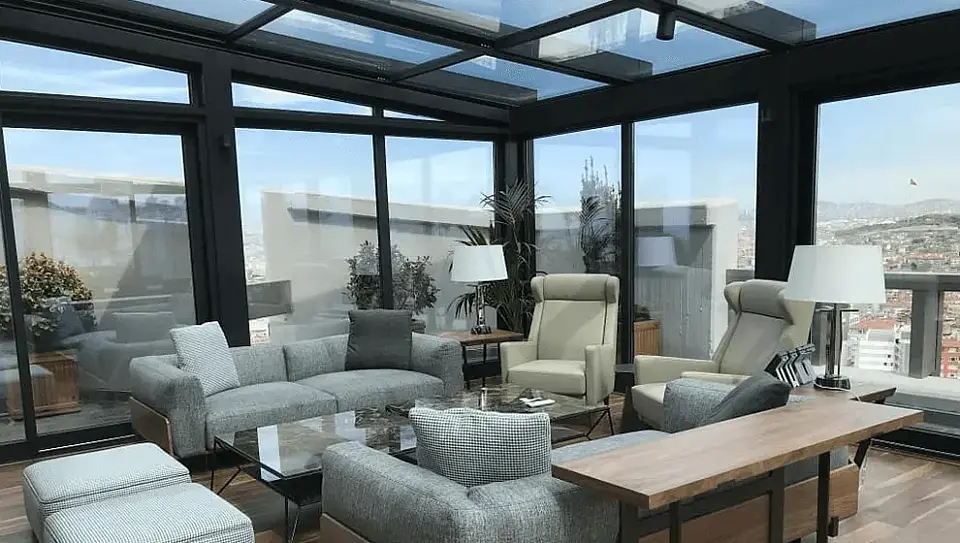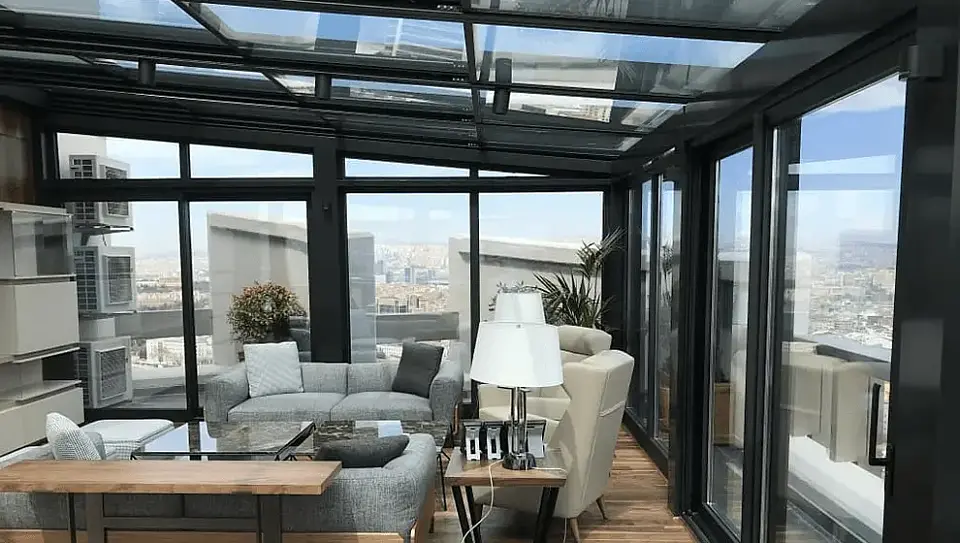A sunroom (or sun porch) is a type of room addition to a house that primarily functions as a lounge space and provides ample exposure to sunlight. It frequently sits on the side of the building that faces the sun and typically has a lot of windows, skylights, or glass walls.
In architecture, a sunroom is used as a place for leisure, relaxation, and enjoyment of the outdoors and natural light. It offers a cozy and light space all year long and may be utilized as a living room, dining room, or even a home office. It can also raise a home's overall value and visual appeal.
An all-season sunroom is a type of sunroom that is designed to be used comfortably throughout the year, regardless of the weather outside. Usually, it has heating and cooling components. This makes it possible to regulate the space's temperature, enabling use throughout both cold and hot seasons. As a multipurpose home improvement, an all-season sunroom allows for indoor-outdoor living, entertaining, and protection from the elements. It is even possible to convert balcony to sunroom and obtain a sunroom addition to the interior space if the structural and climatic features are adequate to do so.

A sunroom typically includes sunroom windows, sunroom doors and a sunroom glass roof. According to installation type, the structure can be a glass sunroom addition, for instance a sunroom patio or it can be a backyard sunroom which is a type of freestanding sunroom.
A sunroom that is not connected to the main building construction is known as a freestanding sunroom. It is a separate building with its own foundation, roof, and walls instead. Freestanding and insulated sunrooms offer a bright and welcoming space for unwinding, entertainment, or even plant growth. They are frequently utilized as garden rooms, greenhouses, or outdoor living spaces. They provide some separation from the main structure and give more design and site flexibility.
There is a difference between sunroom and conservatory. Sunrooms are often more integrated into the existing home and used as additional living space, while conservatories tend to have a more standalone appearance and are often used as greenhouses or plant rooms.
Modern sunrooms often offer more technology-integrated solutions. To exemplify; when retractable systems are used, a more versatile structure would be built. Libart’s retractable aluminum architectural systems, vertical retracting doors and windows and skylight structures that can be manufactured in a dome-shape could be combined to obtain an open sunroom which can be completely closed if desired. Moreover, a sunroom restaurant or a hotel terrace could benefit commercially from such a sunroom system.
Adding a sunroom to a home can offer several benefits, including:
Adding a sunroom to a home can also have some potential drawbacks, including:

The cost of a sunroom can vary widely depending on several factors, such as size, materials, design, location, and any additional features. Sunroom builders and sunroom manufacturers put several aspects into account while calculating the total cost. Cost-related variables include the following:
To acquire a precise estimate of the cost of building a sunroom, at least this 5 parameters should be determined.
Get in touch with Libart to bring your dreams to life. Simply send your dreams with detailed an email to [email protected]





